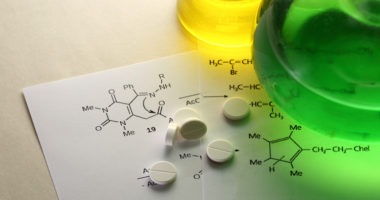Drug Product Insights: Solubilization Strategies and Technologies
As the number of and diversity of drug candidates enter pharmaceutical companies’ pipelines, strategies to overcome issues in solubility of poorly water-soluble drugs is increasingly important, creating opportunities for excipient manufacturers and CDMOs and CMOs. So what are some recent developments?
Resolving solubility challenges is often the difference for a promising drug candidate to enter or continue clinical development. It is estimated that at least 40% of current new chemical entities may be described as poorly soluble with even a higher percentage in pipelines. DCAT Value Chain Insights looks at recent developments in resolving the solubility challenge.
Some recent developments
Solubilization approaches is a common approach being pursued by pharmaceutical companies, contract development and manufacturing organizations, and excipient makers. But what may be some approaches not on the industry radar? Below are some recent developments from smaller companies and academia.
Novartis and MedinCell. In February 2016, MedinCell, a drug-delivery company, entered into a non-exclusive collaboration agreement with Sandoz, a Novartis company, to develop and commercialize long-acting injectables with a primary focus on oncology. The first product has been selected and development efforts are underway.
Under the agreement, the active pharmaceutical Ingredients (APIs) will be formulated using the proprietary MedinCell BEPO technology platform to enable less frequent drug administration and potentially improved patient tolerability, which may reduce both direct and indirect drug costs. BEPO’s platform is compatible with many small molecules, peptides, and biologics. Both parties will have access to GMP-grade polymers through a joint venture between MedinCell S.A. and Corbion N.V., CM Biomaterials.
Based on a combination of custom proprietary copolymers, solvent and API, the BEPO technology is designed to provided controlled release of drug for days, weeks, or months from a fully biodegradable in-situ depot that forms after subcutaneous injection or local delivery of the formulated API. BEPO is composed of diblock (DB) and triblock (TB) copolymers containing hydrophilic and water-soluble blocks (polyethylene glycol) linked with hydrophobic and amorphous blocks (poly(D,L-lactic acid)), which form a semi-solid depot when exposed to an aqueous environment. The hydrophilic blocks can interact with hydrophilic APIs and permit for their controlled release, whereas the hydrophobic blocks are able to solubilize and retain hydrophobic APIs, according to information from MedinCell.
Phytoption. Phytoption LLC, a startup based on a Purdue University innovation, earlier this year received $750,000 in a federal Small Business Innovation Research Phase II award from the National Science Foundation to advance its development of natural extracts and their derivatives for use in drug, food and personal care products. Joanne Zhang, co-founder of Phytoption, said the company’s products, SoluPhy series of ingredients, are originally derived from crops and can help formulate active ingredients and make those ingredients more soluble, stable and effective.
“Phytoption is one of the first to successfully transform high-value, insoluble ingredients to soluble forms for use in food, supplements, pharmaceuticals and cosmetics,” Zhang said in a Purdue University release. “By making these ingredients more soluble, we can enhance their efficacy and safety in various products.”
Led by Henry Havel, principal investigator at Phytoption and a retired research leader from Eli Lilly and Co., Phytoption’s scientific team comprises experts in food science, biology and drug development. “It is estimated that about 40 percent of new drug molecules have drug delivery issues due to their low solubility,” Havel said in the release. “For chemicals in the drug discovery stage, the percentage of insoluble compounds can be much higher. Finding ways to improve the solubility of these molecules is essential to more successful drug discovery, development and commercialization.” Phytoption’s formulations are designed to enable poorly water-soluble actives, such as antioxidants and anticancer drugs. Its technology helps enhance the efficacies of numerous active ingredients. Phytoption received a $225,000 federal Small Business Technology Transfer Phase I grant in 2014 from the National Science Foundation for its research in new drug excipients. It received a $25,000 prize as the winner of the 2015 BioCrossroads New Venture Competition during the Indiana Life Sciences Summit.
University of Liverpool. New research led by the University of Liverpool aims to improve the administration and availability of drug therapies to HIV patients through the use of nanotechnology.The research, conducted by the collaborative nanomedicine research program led by Pharmacologist Professor Andrew Owen and Materials Chemist Professor Steve Rannard, examined the use of nanotechnology to improve the delivery of drugs to HIV patients.
The researchers point out that currently, the treatment of HIV requires daily oral dosing of HIV drugs, and chronic oral dosing has complications that arise from the high pill burden experienced by many patients across populations with varying conditions leading to non-adherence to therapies. The researchers report that recent evaluation of HIV patient groups have shown a willingness to switch to nanomedicine alternatives if benefits can be shown. Research efforts by the Liverpool team have focused on the development of new oral therapies, using solid drug nanoparticle (SDN) technology which can improve drug absorption into the body, reducing both the dose and the cost per dose, according to an university release.
The researchers point out that no clinically available oral nanotherapies exist for HIV populations and conventional pediatric HIV medicines are poorly available. The program examined one current pediatric formulation that uses high ethanol concentrations to solubilize lopinavir, a poorly soluble antiretroviral. Through the use of a small-scale nanomedicine screening approach developed at the University of Liverpool, the researchers were able to generate a water dispersible nanotherapy, thereby removing the need to use alcohol in the pediatric medicine.The research, funded by the UK Engineering and Physical Sciences Research Council is in ongoing human trials, and the preclinical development has been published in a recent article in Nature Communications.







